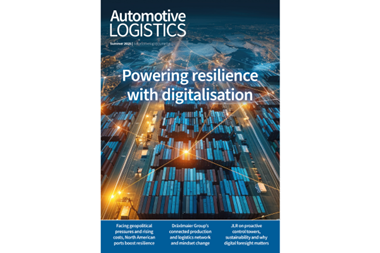 The Chinese government is using car-sharing – short-term car rental, usually charged by the hour – to stimulate the new energy vehicle (NEV) market and increase individual mobility efficiency. In June 2017, the central government released draft guidance for the car-sharing industry, outlining some supporting policies. The guidance specified certain requirements for car-sharing businesses, defined their role in urban mobility, and offered high-level support measures, such as parking spaces.
The Chinese government is using car-sharing – short-term car rental, usually charged by the hour – to stimulate the new energy vehicle (NEV) market and increase individual mobility efficiency. In June 2017, the central government released draft guidance for the car-sharing industry, outlining some supporting policies. The guidance specified certain requirements for car-sharing businesses, defined their role in urban mobility, and offered high-level support measures, such as parking spaces.
Public transport is still insufficient in China. In 2016, there was still only 25 metres of subway in Shanghai per thousand people – about half of that in London. And private vehicle ownership was only around 110 per thousand people at the end of 2016 – one-eighth of the level in the US and one-fifth of that in the UK. In certain large cities, such as Shanghai and Beijing, registered car plates are strictly controlled by the government due to traffic jams, which consequently restrains citizens from owning cars. Even for those with cars, there is inconvenience due to traffic control on private cars in some cities.
As a result, car-sharing has been well received by Chinese customers. According to Arthur D. Little’s recent global study of over 6,500 customers, The Future of Automotive Mobility, 42% of Chinese customers are willing to replace private cars with appropriate car-sharing and other new mobility services, in comparison with a global average of 22%.
OEMs in the leadSince 2015, a large number of players have entered this market. By early 2017 the total number had reached over 100. Currently, there are three main types of car-sharing players in the market – OEMs (who have approximately 75% of the market), car rental companies (roughly 5%), and third-party technology companies (about 20%) – mostly start-ups funded by venture capital.
For example, Microcity, founded in 2013, the largest player so far in China, has strong support from Geely. All of its vehicles are provided by Kandi EV, the 50:50 joint venture between Geely and Kandi Group. With substantial support from the Hangzhou government, including free parking spaces and a subsidy for infrastructure construction and charging, it had approximately 11,000 vehicles in operation by late 2016. Besides its network inside Hangzhou, it has built up service spots in neighbouring tier three and tier four tourism cities. Tourists can drive the cars from Hangzhou to these places of interest very conveniently.
Foreign OEMs have launched car-sharing businesses in China, although their market share is much lower than that of local ones. Considering most local governments’ supporting policies focus on NEVs only, foreign OEMs will be at a disadvantage in terms of getting subsidies, business plates and parking spaces if they do not have NEV fleets.
The Chinese central government has released fuel consumption and NEV credit requirements for OEMs, defining the NEV penetration target for 2020. Car-sharing can be a major way for OEMs to digest the NEV volume quota. Currently, 90% of the shared cars in the market are NEVs (major models including Kandi EV, Lifan EV, BAIC EV160, ROEWE E50 and Chery EQ), and 10% are internal combustion engine cars, mainly run by the brands of TOGO (models including Smart, Mini, Citroën C3-XR, ROEWE 550, Peugeot 2008) and Car2go (Smart).
In addition, according to ADL’s global study, the classic automotive pyramid is changing due to the development of shared mobility, autonomous driving and electric vehicles. The new role of 'customer mobility interface provider' is taking access to, and relationships with, end customers from OEMs. Moreover, they are likely to have higher bargaining power due to large procurement volumes. Given these risks, OEMs have strong motivation to be engaged in this role.
Of all the new mobility services, chauffeur and car-sharing services are considered to have high potential in China. However, Chinese local governments have launched very strict controls over chauffeur services, such as the size of the wheelbase of the chauffeured car and a requirement for chauffeurs in tier- one cities to have residency in those cities.
Struggle for profitAlthough car-sharing is booming, the business faces multiple challenges. Most players are not profitable and are struggling to overcome various operational difficulties.
The price of car-sharing is relatively low in China. Taxis are the major competitor and are also low-cost, compared to developed countries. In the long run, with the salary level of taxi drivers increasing (due to rising labour costs in China), the relative competitiveness of car-sharing versus taxi will improve. On the other hand, utilisation of vehicles is low – less than 20% as of Q1 2017. The major reason is the limited number of service spots, which are scattered among different players, as well as operational hurdles such as tides (insufficient supply during rush hour, while cars are idle during non-rush hour).
In addition, the fixed cost of vehicles is high, including depreciation, vehicle insurance and parking. Operational difficulties include limited parking spaces and a restriction on the number of business plates (licence plates for business vehicles such as car-sharing and taxis) in tier one cities.
Car sharing set to growDespite the challenges, car-sharing will grow, with more players entering the fray. In the near future, the sector will further consolidate, as the business requires scale and the necessary resources, such as plates and parking lots, which are limited. Industry consolidation and improved customer acceptance, or even loyalty, will lead to higher fleet utilisation and scale of economy. A breakeven business case will then be achieved.
Given the challenging environment, however, players in this sector will need to outperform in several key areas to survive and achieve competitive advantage.
Klaus Schmitz is a partner for Automotive Central Europe at management consultancy Arthur D. Little's Munich office.



































